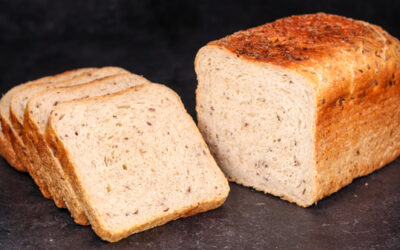Whether you are a complete beginner or a seasoned baker, you will appreciate a super easy recipe that yields a great result. This no-knead deep dish pizza is a perfect example of effortless baking.
I love to try many versions of the same bread as sticking to only one recipe seems quite boring to me. There are so many ways to do one thing and that is why I have so many pizza recipes on my channel along with other breads which in essence are the same but are made differently and produce a slightly different result.
You could make this pan pizza in many ways by pre-fermenting a portion of the total flour and kneading the preferment into the dough the following day. You could use more yeast and make the pizza on the same day as a straight dough. You could swap the yeast for a sourdough starter and build a leaven instead. As you can see the possibilities are plentiful.
What I decided to do is perhaps the easiest hands-off approach possible and the result is no worse because of it. A long slow fermentation builds flavour and develops texture. This long slow proof also develops gluten similarly to an autolyse and that is why we can afford to not knead or fold this dough. If you can imagine an even simpler method for this recipe, I would love to hear it.
If you are feeling really lazy, then skip making the sauce and simply get some good quality store-bought stuff instead. Or if you don’t fancy pizza, then top the dough with some roasted vegetables and parmesan and call it a focaccia. See, it is not just simple but also versatile.
The relatively high hydration gives this pizza a beautiful open crumb and a light texture.
I recently got some new pizza pans from Lloyd Pans and decided to test them out here. They worked a treat, and they better have because they were not cheap! The ones I have are quite small, so I divided the dough in two and made two pizzas. You can use one large baking dish instead or if you do not have a large one, then simply make half the recipe.
If you are interested in the pans that I am using you can find them here or here.
Ingredients
For the dough –
500g (1.1lb) strong white bread flour
1g (0.03oz) instant dry yeast or 1.2g (0.04oz) active dry yeast or 3g (0.1oz) fresh yeast
10g (0.35oz) salt
50g (1.75oz) olive oil
400g (14.1oz) cold water *
*To learn more about dough temperature control click here.
For the sauce –
1 tin, 400g (14.1oz) tomatoes
4g (0.14oz) salt
3 cloves garlic, chopped finely
Oregano to taste
Pinch of chili flakes
Olive oil for cooking
To top the pizza –
Pepperoni
Grated low moisture mozzarella
Method
- Make the sauce. In a small pan on medium heat combine the oil, garlic, salt, and chili. Cook for around 3 minutes or until the garlic starts browning. Add the oregano and the tinned tomatoes. Bring up to a simmer and cook for 30 minutes. Check for seasoning and adjust if necessary. Pour the sauce in a bowl, cover it, and leave it in the fridge until needed.
- Make the dough. In a large bowl combine the water, yeast, salt, and olive oil. Stir well to dissolve any large salt crystals and to hydrate the yeast. Add the flour and mix the dough with a fork until there is no dry flour left. Scrape down the sides of the bowl. *Desired dough temperature 22C (72F). If your dough is warmer, then it will ferment more rapidly. If it is cooler, then it will take longer.
- Cover and ferment for 8 – 10 hours. The fermentation time can cut down by either using warmer water or more yeast. It can also be extended by using less yeast and cooler water. My kitchen was around 24C (75F), and I made this dough just before bedtime and it was ready by the time I woke up. Yes, I had pizza for breakfast!
- If you are making one large pizza, then you can shape it in the bowl instead of doing what I show in the video. If you are making two smaller pizzas like I did, then get a large tray, wet it with water and wet your hands. Release the dough from the bowl and place it on the tray. Water will prevent the dough from sticking to your hands and to the tray. Pinch the dough in half to get two even pieces.
- Shape the dough pieces lightly by lifting them up and folding them underneath themselves just as if you were performing a ‘coil fold’ on a stretchy dough.
- Brush your pans with oil and place the dough inside. Brush the surface of the dough with oil too.
- Ferment for around 2 hours or until doubled in size. The dough should be visibly puffed up and quite wobbly when you give the tray a shake. *During the final hour of fermentation preheat your oven to 230C (450F) fan off.
- Top the dough and bake it for 25 – 30 minutes.
- Let it sit in the tin for at around 10 minutes before removing otherwise you risk breaking it.
Keep in mind that the conditions in each kitchen are different, so fermentation times may vary for you. It is up to the baker to control the bread and react accordingly.
Your oven may be different too, so your baking time may vary.
Watch the video here



